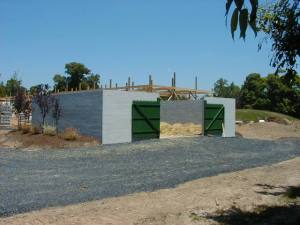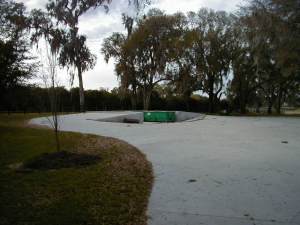Composting, or deriving decayed plant matter from manure into nutrient-rich soil-like material, may be as old as, well, dirt. Still, the practice of composting remains a relevant option for barn owners; especially as sustainable farming methods gain popularity.
Beyond sustainability, compost pros often cite sheer quantity as initiative: a single horse (1,000 lbs. or so) produces between 40 to 50 pounds of manure daily. That brings a phrase to mind that I won’t type, but you get the gist: horse owners deal with a lot of muck that can’t be ignored.
So you have the raw material to work with…now what? Unfortunately, it’s not as simple as piling it up and letting nature run its course. You have to turn (often literally) manure into compost—a feat that isn’t overly difficult, but involves a few steps. However, with a little effort, complete composting can occur within four to six weeks.
Most of what I’ve learned about composting comes from attending a seminar hosted by the Horse Outreach Workgroup (HOW) on soil management and land use issues and working with Peter Moon of O2 Compost – both are fantastic resources for more in-depth review.
According to Peter Moon of O2 Compost, controlling the composting process is the real challenge, since horse manure often contains a high wood content from bedding as well as even weed seeds—meaning it’s only garden-friendly if properly composted. Moon recommends inducing oxygen through one large compost pile using an electric blower, which stimulates microbial activity and jumpstarts the composting process. Known as aerated static pile composting, this may be an option to consider if you are dealing with a large volume of manure (more than four horses), as it eliminates manual turning. Another method is to manually turn windrows (elongated piles) using a shovel or front-end loader to tumble the manure to introduce oxygen throughout the mix. Regardless of method, the goal remains the same: naturally heated compost that ranges between 130 to 140 degrees Fahrenheit, a temperature that kills most internal parasites and weed seeds.

The Horse Outreach Workgroup (HOW) identifies oxygen, moisture, and carbon to nitrogen ratio as measurable qualities essential to composting successfully. To calculate proper levels of each, I recommend the tools available through the Cornell Waste Management Institute.
Oxygen
Whether turning your compost up to three times a week manually or utilizing an electric blower, pipes, fans, or other tools, getting oxygen into the mix is paramount. Without oxygen, it’s just a smelly pile of manure. The process of introducing oxygen into compost is called aerating; aeration allows faster decomposition.
Moisture
HOW notes that compost piles should feel like a wrung-out sponge: not too wet and not too dry. Overly wet compost can be tampered with leaves, straw, or yard trimmings, while a little water can aid dry compost. Covering the pile with plastic can also help retain moisture.
Carbon: Nitrogen Ratio
While it can get much more technical, basically a compost pile should be carbon based with a touch of nitrogen. Various compost components contain different levels of each, so calculation tools such as the ones available from Cornell Waste Management come in handy. HOW lists the ideal carbon to nitrogen (C:N) ratio as 25-30:1. Horse manure itself is about 50:1 (a number higher still with bedding factored in), which is why leaves and other materials must be added to achieve the proper C:N ratio.
– – – – – – – – – – – – – – – – – – – – – – – – – – – – – – – – – – –
Benefits
- Enrich pastures and gardens
- Improve soil structure, texture, aeration, and water retention
- Lighten clay soil types
- Increase water retention in sandy soil
- Help control erosion
- Increase soil fertility
- Balance pH levels
- Control odors, flies, and pests
- Capture over 95% of industrial volatile chemicals (VOCs) in contaminated air
- Reduce manure volume by about half
Tips
- Switch bedding from wood shavings to wood pellets to improve the carbon to nitrogen ratio (C:N)
- Start in late summer/early fall to take advantage of longer daylight hours and decent weather
- Compost is worth about $20 to $40 per yard, according to Peter Moon of O2 Compost
- Do not use treated wood scraps or yard trimmings treated with chemical pesticides in your compost pile
- “Done” compost is about half of its original size
Resources
- U.S. Environmental Protection Agency
- HOW – Horse Outreach Workgroup
- O2 Compost
- Cornell Waste Management Institute
- Dairy and Animal Science – Penn State University

